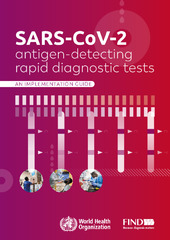In March 2022, the World Health Organization published its first guide to self-testing for COVID-19 using rapid antigen tests.
“The goal is to contribute to the effective management of COVID-19 as a public health problem,” their guidelines read.
The document emphasizes that this option must be offered in addition to professionally administered testing.
WHO further explains that there is evidence showing users can use self-tests in a reliable and accurate manner, and that it is both acceptable and feasible to use the tests.
An explanation of when self-testing will be appropriate must be provided, as must complete instructions tailored for country specific contexts.
Clear messaging is also needed on what to do with the results of a test and what individual responsibilities will be.
Other recommendations include:
- COVID-19 self-test kits should meet the existing World Health Organization (WHO) standards.
- Self-tests should be accepted for screening and diagnostic purposes.
- If positive, a self-test should, if appropriate in a country-specific context, be sufficient to link a positive-tested patient with clinical care and therapeutics.

